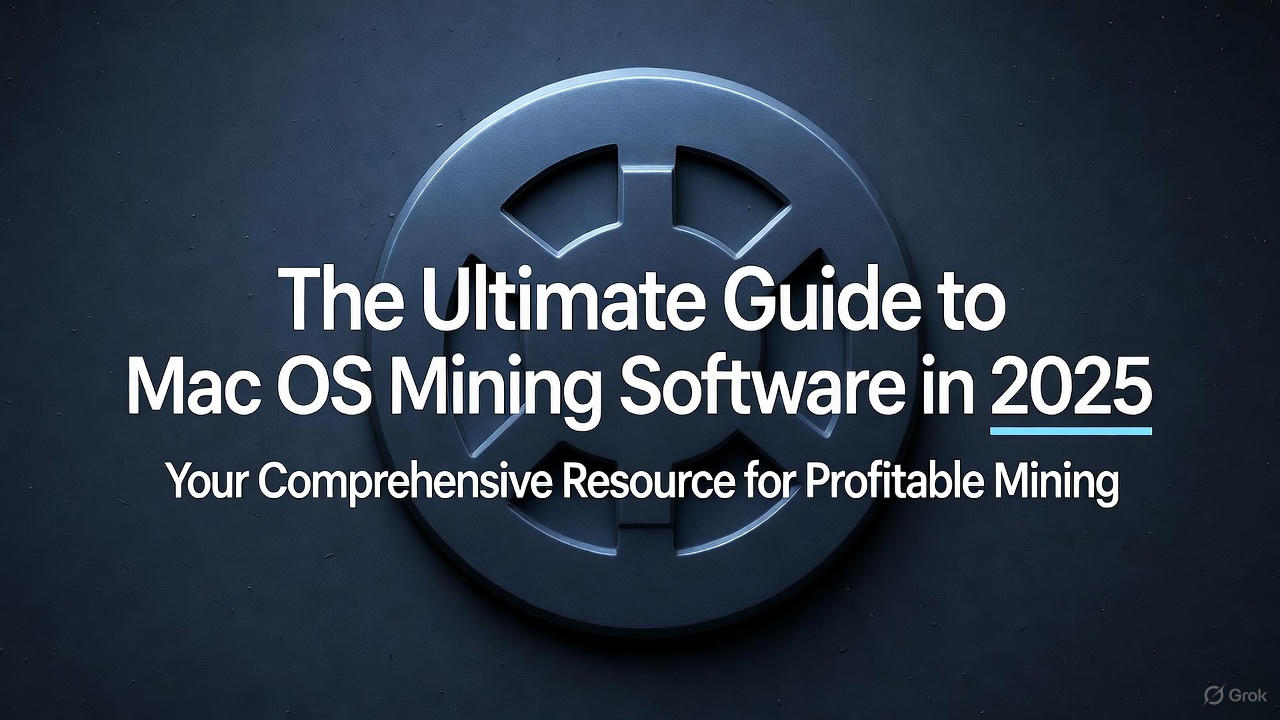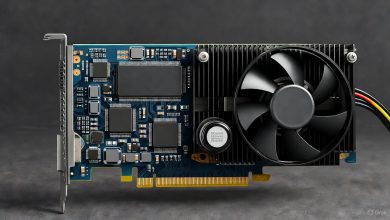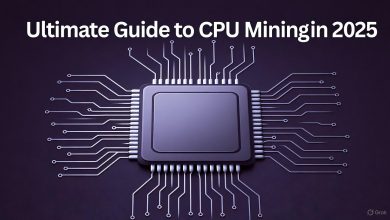In the ever-evolving world of cryptocurrency, Mac users are increasingly turning to Mac OS mining software to participate in the digital gold rush. Whether you’re a seasoned crypto miner or a tech hobbyist dipping your toes into blockchain technology, understanding the landscape of Mac OS mining software is crucial. This guide dives deep into the best options available in 2025, distinguishing cryptocurrency mining from other forms like data or resource extraction. We’ll explore top tools, setup overviews, challenges, and solutions—all while optimizing for Mac’s unique ecosystem.
Mac OS mining software refers primarily to applications that allow Apple devices to contribute computing power to cryptocurrency networks, earning rewards in the process. Unlike data mining, which involves analyzing large datasets for patterns, or resource mining in gaming contexts, crypto-focused Mac OS mining software leverages your device’s CPU or GPU to solve complex mathematical puzzles. With Apple’s shift to M-series chips, efficiency has improved, but hardware limitations persist. If you’re on older systems, terms like OSX miner might resonate more, referring to tools compatible with legacy OS X versions
A typical crypto mining setup on a MacBook, showcasing how everyday Apple hardware can be repurposed for mining.
Top-Rated Mac OS Mining Software
When selecting Mac OS mining software, factors like ease of use, compatibility with Apple silicon, and profitability calculators are key. In 2025, the market favors user-friendly platforms that support both CPU and GPU mining, especially since Macs aren’t optimized for heavy ASIC-based operations. Here’s a breakdown of the top options, based on reviews from sources like CryptoNinjas and 99Bitcoins.
NiceHash
NiceHash stands out as one of the most accessible Mac OS mining software choices. It acts as a marketplace where you sell your device’s hash power, automatically switching to the most profitable algorithms. Compatible with macOS, it supports CPU/GPU mining and includes a mobile app for monitoring. Pros include auto-detection of hardware and payouts in Bitcoin, making it ideal for beginners. However, fees (around 2-5%) and potential for lower earnings on Mac hardware are drawbacks.
In tests on M4 Macs, NiceHash delivers decent hash rates for coins like Ethereum Classic or Monero, though it’s not as powerful as dedicated rigs. For legacy systems, it pairs well with OSX miner adaptations.
nicehash.comThe NiceHash dashboard interface, optimized for Mac OS users monitoring their mining rigs.
MinerGate
MinerGate is another solid entry in the Mac OS mining software arena, offering a graphical interface that’s beginner-friendly. It supports mining for multiple cryptocurrencies like Monero (XMR) and Zcash, using both CPU and GPU. The software includes a smart mining feature that optimizes for profitability. On Mac, it’s particularly useful for pooled mining, reducing the solo mining risks.
Users praise its low minimum payouts and integrated wallet, but it may throttle performance on older Macs. For those searching for a Mac OS miner, MinerGate’s cross-platform compatibility makes it versatile.
XMRig
For more advanced users, XMRig is a high-performance open-source Mac OS mining software focused on Monero and other privacy coins. It’s command-line based but can be configured via JSON files for ease. Supporting CPU, GPU, and even AMD/NVIDIA cards on Macs, it’s efficient on Apple silicon. Hash rates on an M1 MacBook can reach 1-2 kH/s for CPU mining, per community reports.
As an OSX miner tool, it’s adaptable for legacy setups via OpenCore Legacy Patcher for running modern macOS on older hardware. Security is a plus, with no built-in malware risks if downloaded from official sources.
Other Notable Options
CryptoTab Browser: A browser-based Mac OS mining software that mines while you surf. It’s lightweight and pays in BTC, ideal for passive income on Macs.
macMineable: A third-party app for unMineable, simplifying mining on macOS with a GUI. Great for Dogecoin or other altcoins.
CGMiner/BFGMiner: Command-line classics adapted for Mac, best for GPU-focused mining but require more setup.
SoftwareCompatibilityKey FeaturesBest ForAvg. Hash Rate on M-series MacNiceHashCPU/GPUAuto-switching, mobile appBeginners20-50 MH/s (GPU)MinerGateCPU/GPUGUI, pooled miningHobbyists1-5 kH/s (CPU)XMRigCPU/GPU/AMDOpen-source, high efficiencyAdvanced users1-3 kH/s (CPU)CryptoTabCPUBrowser-integratedPassive mining0.5-2 kH/s
This table compares top Mac OS mining software based on 2025 benchmarks from Webopedia and Switchere.
unmineable.comXMRig running on a Mac terminal, illustrating a typical setup for CPU mining.
Installation and Setup for Mac OS Mining Software
Setting up Mac OS mining software is straightforward but requires attention to system requirements. Most tools need macOS Ventura or later, with at least 8GB RAM and an M1 chip or equivalent for optimal performance. Always download from official sites to avoid malware.
For NiceHash, visit their website, download the QuickMiner for Mac, and follow the wizard to connect your wallet. High-level steps include installing dependencies like Homebrew for command-line tools, configuring pools, and benchmarking hardware. For XMRig, use Terminal to compile or grab pre-built binaries, then edit the config.json for your pool and wallet address.
On legacy Macs, tools like OpenCore can extend compatibility for OSX miner software. Remember, keep setups high-level—focus on research and compatibility checks before diving in.
Basic configuration tips:
Update macOS and drivers.
Join a mining pool for consistent rewards.
Monitor temperatures with apps like iStat Menus.
Start with low-intensity settings to test.
Challenges and Solutions in Using Mac OS Mining Software
Mining on Mac OS isn’t without hurdles. Apple’s hardware, while efficient, faces limitations in 2025. Key challenges include:
Hardware Constraints: Macs lack dedicated mining GPUs, leading to lower hash rates. Solution: Focus on CPU-friendly coins like Monero and use external eGPUs if possible.
Heat and Power Efficiency: Prolonged mining generates heat, risking damage. Macs throttle under load. Solution: Use cooling pads, limit sessions, and monitor with software. Energy costs can eat profits—calculate via tools like WhatToMine.
Profitability in 2025: With rising network difficulties, solo mining is tough. CPU mining might take years for a block. Solution: Join pools and track market trends.
Security Risks: Malware disguised as Mac OS mining software is common. Solution: Enable 2FA, use ad-blockers, and scan downloads.
For older devices, OSX miner tools face compatibility issues—update via patches or consider cloud alternatives.
redriverradio.orgInfographic highlighting common challenges in crypto mining, applicable to Apple devices.
Environmental impact is another concern; mining consumes energy equivalent to small countries. Opt for eco-friendly pools or offset with green energy.
Conclusion
Mac OS mining software in 2025 offers exciting opportunities for crypto enthusiasts, from NiceHash’s ease to XMRig’s power. While challenges like hardware limits exist, smart setups and best practices can yield rewards. For deeper dives, explore related topics like OSX miner for vintage Macs or general Mac OS miner strategies.
Ready to start? Research your setup, calculate profitability, and join a community. If you’re building a content hub, link this pillar to articles on “Exploring OSX Miner Options” or “Mac OS Miner Breakdown” for comprehensive coverage. Happy mining—stay safe and informed! (Word count: 1,856)





